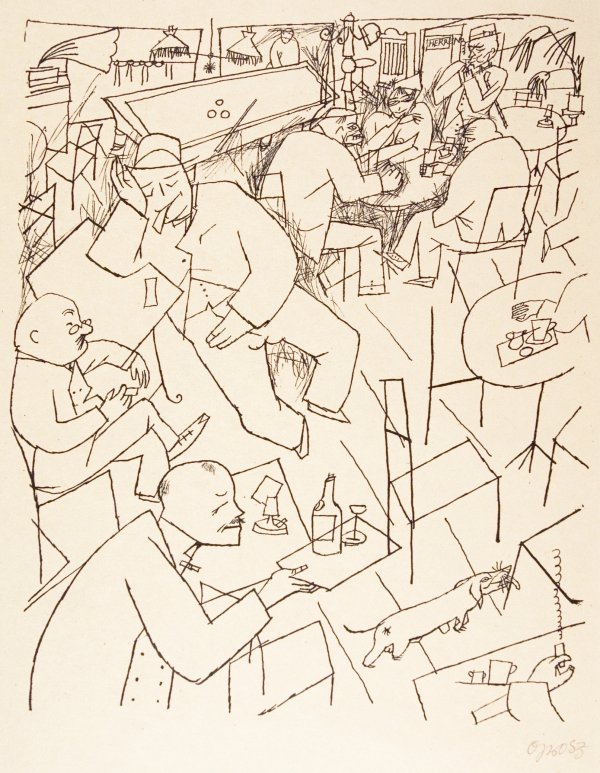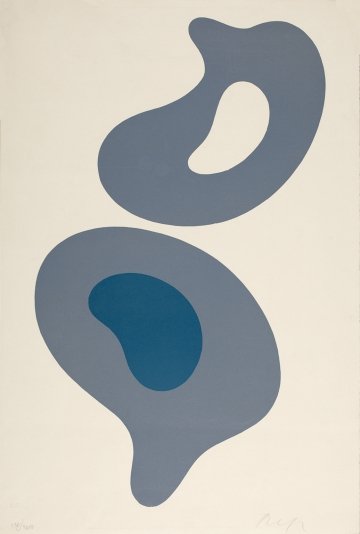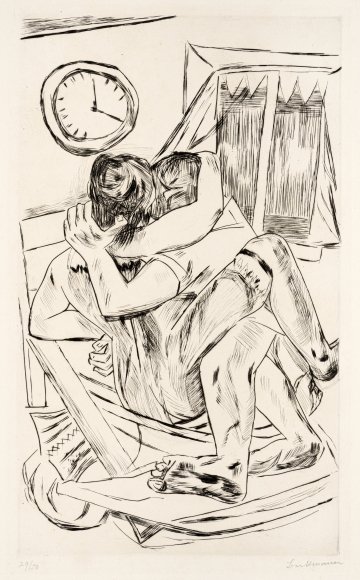
The early twentieth century saw a radical transformation of visual aesthetics in German art. In response to rapid urbanization, new technological media, and the mechanized destruction of the First World War, artists increasingly sought new visual strategies for capturing the intensity and fragmentation of modern life. The portraits, urban scenes, and abstract works exhibited in German Modernism: Sound and Vision attest to these aesthetic and perceptual changes, as well as to the fragility of human life in the modern technological age.
Although silent and still, the exhibited works on paper suggest, in their dynamic forms, the sound and movement of the modern metropolis. The scratchy errant lines of George Grosz’s 1916 work Joint (Kaschemme), for example, evoke the clattering of glasses and dishes, scraping of chairs, and lilting phonograph heard amidst the chatter of a busy urban locale. Connecting the plight of the urban poor to the violence of the battlefield, Käthe Kollwitz’s The Sacrifice (Das Opfer) from 1922-23 depicts an aura of radiating light around a mother and child, suggesting both the explosions of war and those of personal grief, and is widely read as a response to the death of Kollwitz’s son at the Western Front in 1914.

lithograph, SLU 76.79
Josef Albers
Jean Arp
Ernst Barlach
Max Beckmann
Lovis Corinth
Otto Dix
Max Ernst
George Grosz
Paul Klee
Käthe Kollwitz
Oskar Kokoschka
Max Liebermann
Max Pechstein
Kurt Schwitters
Working across various media, including woodcuts, lithographs, etchings, screenprints, and ink drawings, German artists like Grosz, Kollwitz, Max Beckmann, and Jean Arp sought a visual intensity for their work that could stand out amid the early twentieth century’s expanded visual culture of film, photography, poster art, advertising, and illustrated magazines. Grosz and other artists took direct inspiration from modern media like cinema, whereas Kollwitz and others looked to literary and historical sources and revived older techniques like the woodcut as part of their modernist visions.
– Brook Henkel, curator
Associate Professor of German and Film Studies
Co-chair of Digital Media & Film
St. Lawrence University
Showcasing works by major German artists in St. Lawrence University’s permanent collection, alongside select works from the Memorial Art Gallery of the University of Rochester and the Picker Art Gallery at Colgate University, German Modernism: Sound and Vision presents a range of aesthetic styles and movements from early twentieth-century German modernism, such as naturalism, expressionism, abstraction, and Neue Sachlichkeit or New Objectivity. Recognizing the under-representation of women artists during this era, works by Käthe Kollwitz figure prominently in the exhibition.
Special thanks to St. Lawrence University’s Arts Collaborative for funding the exhibition. Thanks also to Nancy Norwood at the Memorial Art Gallery and to Nick West at the Picker Art Gallery for their assistance lending works.

GALLERY HOURS:
Main Gallery
Monday – Thursday 12-8pm
Friday – Saturday 12-5pm
Hallway Gallery
Monday – Sunday 7am – 12pm
The gallery is free and open to the public during the academic year and is closed for University breaks.
